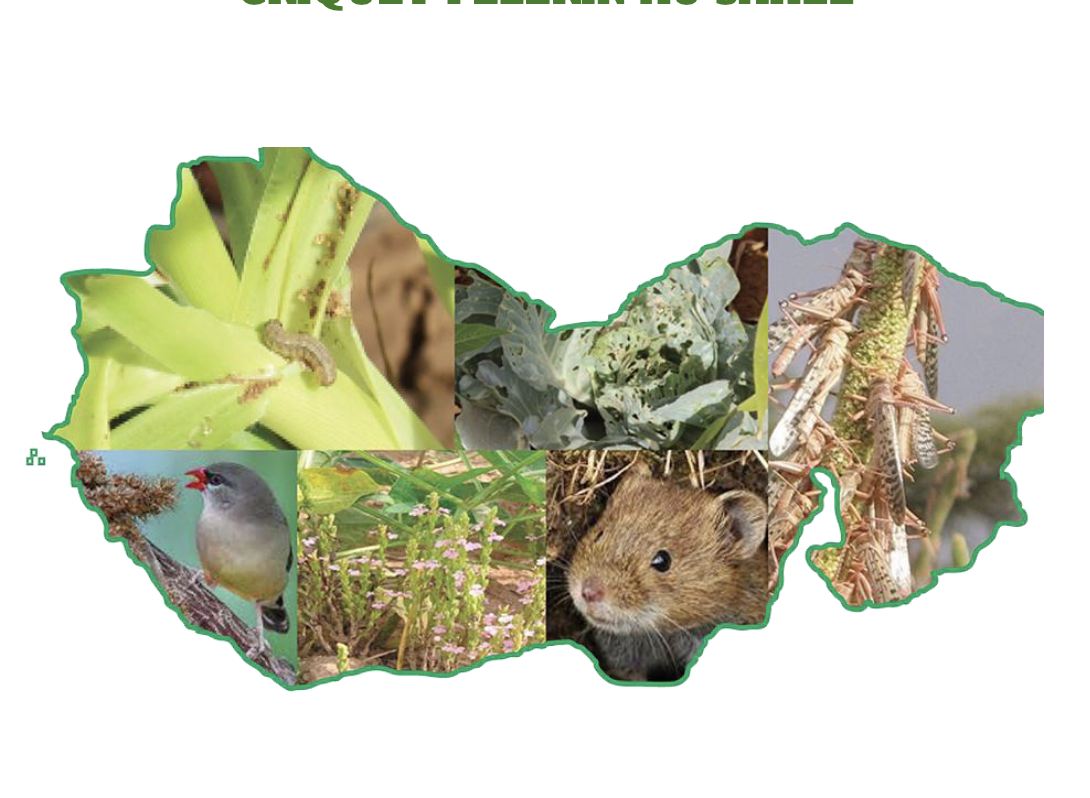SPECIAL ALERT NOTE ON THE LOCUST SITUATION IN FRONTLINE COUNTRIES IN THE SAHEL
Following the exceptional rains recorded in the Sahel and throughout the Desert Locust summer breeding and gregarization areas of the frontline countries during the 2024 summer season, all stations with high locust potential were active. Eco-botanical conditions were favorable for Desert Locust survival and reproduction at most of these stations. The low temperatures observed in November and December, combined with the infero-flux phenomenon, attenuated the evapotranspiration process, resulting in the persistence of vegetation potential in certain areas. The persistence of favorable ecological conditions has slowed the species' migration to North-West Africa, where spring breeding is set to continue. As a result, the locust was able to reproduce effectively, and the process of gregarization - a form of adaptation of the species under the influence of certain density and environmental conditions - was underway in several areas, notably on the northern, southern and eastern slopes of the Aïr, Tamesna and Ténéré massifs.
The locust resurgence observed at the end of 2024 in the southern Sahara, and particularly in Niger where almost 1450 hectares were treated in December, mainly on groups of Solitaro-transian populations, spread to northwest Africa in March 2025. Groups of adults arrived at several sites in Algeria, Libya, Tunisia and, to a lesser extent, Morocco. Spring breeding has begun in some rain-bearing areas of these countries, and larval groups and small flocks began to appear at the end of March. Groups of larvae and adults persisted in southern Algeria towards the Niger border, and larval bands were also observed in Chad. Control operations continued in the Maghreb countries, albeit at a lower intensity than in February.
Eco-botanical conditions continue to be favourable in a few rare places in the Aïr valleys, where a weak presence of vegetation is observed according to information from high-resolution satellite imagery.
The Desert Locust situation in April is characterized by reports of Solitaro-Transian groups and small to medium-sized swarms by locals. On April 12, several moving groups were observed in Timia (180653/084645). On April 13, groups were observed between Tchintoulouss and Iferouāne, more precisely at Ingal (185922/092056) between Tegemert and Issawan. On April 14, a medium-sized swarm was on the move to the north-west of Iferouāne. The behavior of these groups and/or swarms is variable.
These locust populations behave erratically, certainly in search of the right ecological conditions to continue their maturation. Locusts are sometimes bright pink in color. The swarm moving north-west from Iferouāne seems more coherent, and the Algerian authorities have been informed of the swarm's probable arrival if it does not encounter good eco-botanical conditions on its passage through Niger territory. All reports were subsequently confirmed and authenticated by the CNLA through its locust information feedback network and the rapid deployment of light teams. This resurgence highlights a large-scale, essentially indigenous reproduction, with no allochthonous contributions yet detected. This augurs well for a 2025 locust season that is likely to be very turbulent, especially with the exogenous contribution from spring breeding currently underway in northwest Africa. In all likelihood, when ecological conditions become unfavorable in spring-breeding countries around June-July and possibly much earlier, there will be a spring influx. As a result, we could expect a rather worrying situation in Niger with the arrival of the first useful rains in May or June. This situation is rather unusual. Indeed, of all the recent resurgences, recrudescences and/or invasions that have occurred in Niger, this is the first time that we have seen a large number of locusts at the end of the summer season.
Spring breeding will continue in north-west Africa, notably in central Algeria and western Libya, but also in Morocco and southern Tunisia. Groups of adults and small swarms will reproduce, leading to an increase in groups and larval bands. Control operations will continue to be necessary in these regions to avoid any development that could lead to the displacement of locust populations resulting from spring breeding in these areas towards the Sahel, where conditions should improve with the imminent onset of the summer rainy season.
Given the favorable ecological conditions that persist in parts of the Sahel, and in certain valleys of the Air in particular (e.g. Vallée Anou Makkarene), the presence of locusts could persist in the northern zones of Niger, Mali and Chad until the onset of the rainy season. With a possible influx of spring breeding numbers from
spring breeding in North-West Africa, the locust potential at the start of the 2025 wintering season could see a significant increase in populations, which could constitute a major risk as soon as the first rains start to fall in the Sahel. It is therefore urgent to continue and step up survey operations by deploying
deployment of mixed surveillance and control teams in the Aïr and Ténéré regions of Niger and, beyond, in the other Sahel frontline countries, in order to avoid major infestations at the start of the upcoming rainy season. These operations should also be carried out in other Sahel frontline countries, as long as security conditions allow.
Given the singular nature of this current resurgence in the Sahel and West Africa, notably through the persistence of favorable ecological conditions in some frontline countries, the high locust potential at the start of the summer season, and the likelihood of it being reinforced by numbers that may have escaped control operations in North-West Africa, it is imperative that sustained support be given to Sahel frontline countries in the implementation of their contingency plans in order to contain any significant development in the locust situation that could be detrimental to the upcoming agricultural season in the Sahel.


